 THE MONACO GRAND PRIX LIBRARY BY ROY HULSBERGEN THE MONACO GRAND PRIX LIBRARY BY ROY HULSBERGEN |
||||||||||||||||
|
Alfa Romeo |
|||||||||||||||
| Tweet | ||||||||||||||||
The company that became Alfa Romeo was founded as Societą Anonima Italiana Darracq (SAID) in 1906 by the French automobile firm of Alexandre Darracq, with some Italian investors. One of them, Cavaliere Ugo Stella, an aristocrat from Milan, became chairman of the SAID in 1909 [1]. The firm's initial location was in Naples, but even before the construction of the planned factory had started, Darracq decided late 1906 that Milan would be a more suitable location and accordingly a trait of land was acquired in the Milan suburb of Portello, where a new factory of 6700m2 was erected. Late 1909, the Italian Darracq cars were selling slowly and Stella, with the other Italian co-investors, founded a new company named A.L.F.A. (Anonima Lombarda Fabbrica Automobili), initially still in partnership with Darracq. The first non-Darracq car produced by company was the 1910 24 HP, designed by Giuseppe Merosi, hired in 1909 for designing new cars more suitable to the Italian market. Merosi would go on to design a series of new ALFA cars with more powerful engines (40-60 HP). ALFA also ventured into motor racing, drivers Franchini and Ronzoni competing in the 1911 Targa Florio with two 24 HP models. In 1914, an advanced Grand Prix car was designed and built, the GP1914 which featured a four cylinder, double overhead camshafts, four valves per cylinder and twin ignition[2]. However, the onset of World War I halted automobile production at ALFA for three years. In 1923 Vittorio Jano was lured away from Fiat, partly thanks to the persuasion of a young Alfa racing driver named Enzo Ferrari, to replace Merosi as chief designer at Alfa Romeo. The first Alfa Romeo under Jano was the P2 Grand Prix car, which won Alfa Romeo the inaugural world championship for Grand Prix cars in 1925. For Alfa road cars Jano developed a series of small-to-medium-displacement 4, 6, and 8 cylinder inline power plants based on the P2 unit that established the classic architecture of Alfa engines, with light alloy construction, hemispherical combustion chambers, centrally-located plugs, two rows of overhead valves per cylinder bank and dual overhead cams. Jano's designs proved to be both reliable and powerful. Enzo Ferrari proved to be a better team manager than driver, and when the factory team was privatised, it then became Scuderia Ferrari. When Ferrari left Alfa Romeo, he went on to build his own cars. Alfa Romeo dominated in the middle 30’s and the first two World Champion seasons. In the beginning the cars were raced by the scudera Ferrari and in the 60’s by Autodelta. Alfa Romeo engines were used in McLaren, March and Brabham cars. GP’s contested: 112 from 1950 till 1985 World Championship Constructors points
|
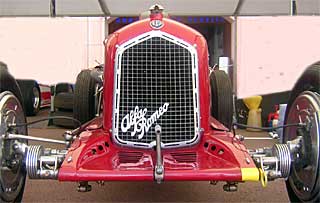 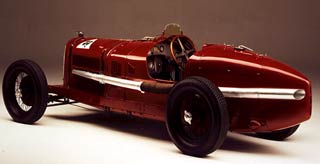 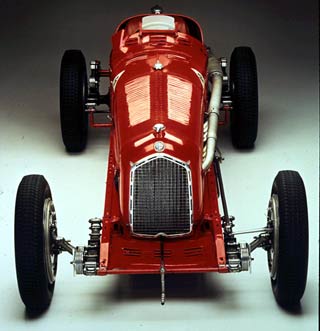 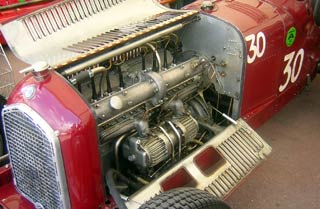 |
|||||||||||||||
| Alfa Romeo P2 - 1924 Chassis: front engine tubular chassis, designed by Vittorio Jano Engine: Alfa 8 cyl., 1987cc, 140hp and 155hp in 1925, with 4 speed gearbox Drivers: Antonio Ascari, Giuseppe Campari Results: ‘24: 1st Lyon, 1-2-3-4 Monza, ‘25: 1st Spa, 2nd Monza |
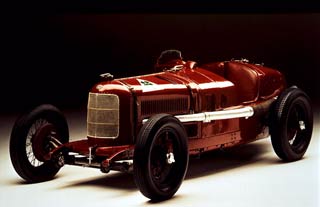 |
|||||||||||||||
| Alfa Romeo 8C “Monza” - 1931 Chassis: another Jano design with a top speed of 210km/h and 225km/h as from 1932 Engine: Alfa staight 8 of 2336cc delivering 165hp at 5400rpm and 178hp as from 1932 Drivers: Nuvolari, Campari, Caracciola, Chiron, Etancelin, Borzacchini, Wimile, Birkin, Trossi, Sienne, Zehender, Farina Results: ‘31: 1-2 Monza, ‘32: 1-2-5-10 Monaco, ‘33: 2-4-5 Monaco, ‘36: 4-5-7 Monaco, ‘37: 6 to 9 Monaco |
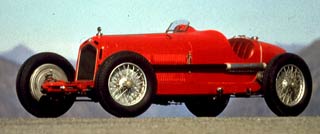 |
|||||||||||||||
| Alfa Romeo P3 (tipo B) - 1932 Chassis: front engine tubular chassis, designed by Jano. A very successfull car for Alfa. Engine: Alfa 2654cc, 215hp at 5600 rpm, in ‘34: 8 cyl 2905cc of 225hp. A twin compressor version was also raced. Drivers: Nuvolari, Chiron, Varzi, Trossi, Zehender, Rigal, Perrot, Moll, Sommer, Brivio, Dreyfus Results: ‘32: won every GP, ‘34: 1-2-4-6 Monaco, ‘35: 2-3-5-6 Monaco, 1st German GP |
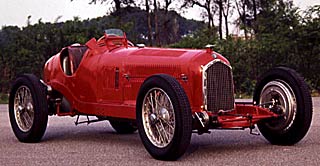 |
|||||||||||||||
| Alfa Romeo P3 (tipo C) - 1935 Chassis: front engine tubular chassis, designed by Jano with atop speed of 290km/h. Independent front and rear suspension Engine: Alfa V12 at 60°, 4064cc, supercharged, 370hp at 5800 rpm, Drivers: Nuvolari, Chiron, Farina, Varzi, Trossi, Zehender, Rigal, Perrot, Moll, Sommer, Brivio, Dreyfus Results: ‘36: 1st Spain, Budapest, Milano, Vanderbild Cup |
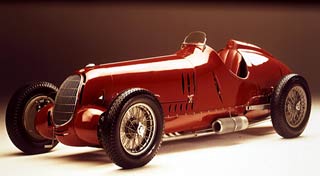 |
|||||||||||||||
| Alfa Romeo 158 - 1938 Chassis: Front engine tubular frame with independent suspension designed by Gioacchino Colombo Engine: Alfa straight eight, twin ohc supercharged 1497 cc delivered 225 bhp and in 1950 350 bhp Designer: Gioacchino Colombo at Ferrari Modena Drivers: 1938 Villoresi, Scudera Ferrari 1947/50 Fagioli, Fangio, Farina, de Graffenried, Guidotti, Parnell, Sanesi, Taruffi, Trossi, Varzi, Wimille Results: ‘38: 1st Monza, ‘40: 1st Tripoli, ‘47/48: every race, ‘50: 6 victories (Farina 1st World Champion) |
 |
|||||||||||||||
| Alfa Romeo 159 - 1951 Chassis: developed on the 158 lay out with de Dion rear suspension Engine: Alfa staight eight supercharged of 1479cc,425 bhp at 9300 rpm. Top speed 305km/h Drivers: Bonetto, Fangio (World Champion 2nd time), Farina, de Graffenried, Pietsch, Sanesi Results: 1951 4 victories, Alfa abandoned GP racing |
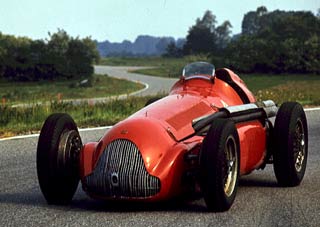 |
|||||||||||||||
| Alfa Romeo 177 - 1979 Chassis: developed with Brabham Engine: Alfa flat 12 of 2995 cc Driver: Bruno Giacomelli Results: none |
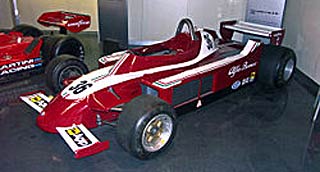 |
|||||||||||||||
| Alfa Romeo 179 - 1980/82 Chassis: derivate of 177 aluminium honeycomb structure with ground effect. Attempted hydropneumatic suspension At the end with a carbon fibre monocoque construction. Engine: Alfa V12 of 2995 cc delivering 520hp at 12.000rpm Drivers: Mario Andretti, Vittorio Brambilla, Patrick Depaillier (who died at Hockenheim in a test accident) Andrea de Cesaris, Bruno Giacomelli Results: ‘80: 11th in WCC with 4 points, ‘81: 8th in WCC with 10 points, ‘82: 9th in WCC with 7 points |
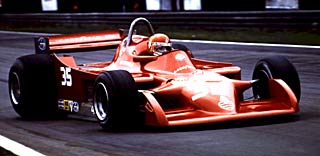 |
|||||||||||||||
| Alfa Romeo 182T - 1982 Chassis: British carbon fibre monocoque Engine: Alfa V12 with 530 bhp. At the end of the season a 90 degree V8 turbo of 1496cc and delivering 600 bhp was tested. Drivers: Andrea de Cesaris, Bruno Giacomelli Results: 9th in WCC with 7 points |
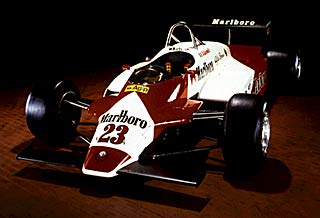 |
|||||||||||||||
| Alfa Romeo 183T - 1983 Chassis: based on the 182 with a flat bottom Engine: Alfa V8 Turbo of 1497 cc delivering 650 bhp Drivers: Euroracing: Mauro Baldi, Andrea de Cesaris Results: 6th in WCC with 18 points |
||||||||||||||||
| Alfa Romeo 184T - 1984 Chassis: more angular body with pushrod front suspension and pull rod rear Engine: Alfa V8 Turbo at 670 bhp Drivers: Eddie Cheever, Riccardo Patrese Results: 8th in WCC with 11 points |
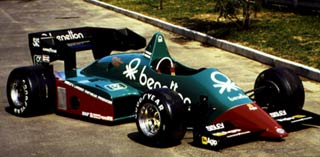 |
|||||||||||||||
Alfa Romeo 185T - 1985
Photos: Alfa Romeo Storica, Roy Hulsbergen |
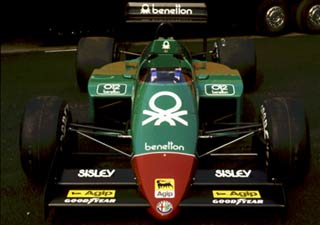 |
|||||||||||||||
| ||||||||||||||||

